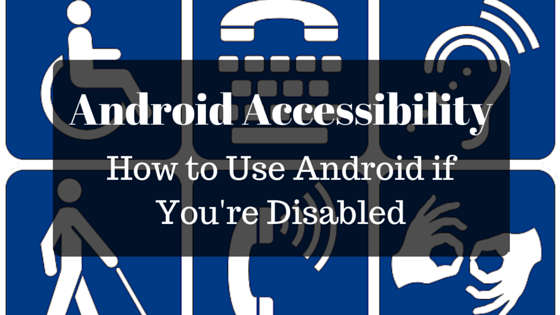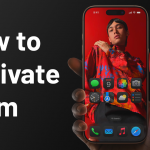Android Accessibility: How to Use Android if You’re Disabled
Unlock the World With Android Accessibility
The world seems to be getting bigger every day, and for most of us, we carry it in the palm of our hand. But smaller devices can create problems with access for people with disabilities. Android accessibility tools can unlock the great big world, with just a few small adjustments and add-ons.
Hearing Impairment
For those who see the world in vibrant color, but have trouble hearing using the Captions function in the Android Accessibility area is the answer. You can set the font type, size, and color, to make it easy to read.
Overcoming Sight Issues
Android has a wealth of features to assist those with limited or no sight. The small text and strange contrasts onscreen can create problems, especially for the elderly as they use devices to connect with family, friends, and the world around them. Large Text, High-Contrast, Color Inversion and Magnification gestures all work to bring the digital world into sharper focus.
The first two are pretty self-explanatory, but Magnification gestures are a real boon. Users can triple-tap the screen to automatically zoom in, hold and drag to move the screen around and use pinching motions to shrink things back down when they’re ready. Color inversion will switch the text and background colors which often makes it easier on the eyes when you’re reading a large quantity of text.
For users who are fully blind, there are features like TalkBack, Braille Support, and Text-to-speech output. Combining these features allows those without sight to get much the same experience as their sighted counterparts when exploring news articles, reading emails or chatting in a text. TalkBack is the screen reader built into the Android platform that will read out whatever text is on a website. Most developers these days even include text tags for images and other visual media that text readers will pick up and include to enhance the experience.
Text-to-speech is also an included feature that can be switched on under the Android Accessibility options. You can set the speed of reading, the different engines that will drive speech synthesis and even the voice you’ll hear from your phone. Google and device manufacturers all have their own engine for this, but you can also get different ones with different features from the Google Play Store.
Braille support is an add-on feature that lets you use your smart device in conjunction with a refreshable braille display. The program coordinates your braille output with your device’s TalkBack feature, allowing you greater flexibility in how you communicate with your device and with the world.
Android Accessibility even has an option for those who struggle with color blindness that makes it hard to distinguish certain color schemes online. The color correction feature has three options, two that deal with red-green color correction and one for blue-yellow color correction. This feature is still pretty new though, so if you have trouble with it, send in your feedback and be patient. The kinks will get worked out as the program gets used more.
Motor-Skills
One of the most challenging areas for accessibility with smart devices is for those with motor skill challenges. As devices get smaller, using them becomes harder for users that have limited mobility in their hands. In addition to the Magnification gestures that also help in this area, Android Accessibility has several functions that increase access for those seeking an easier connection.
The simple onboard features are: power button ends calls, auto-rotate the screen, the Accessibility shortcut on the main screen and the ability to set the Touch-and-hold delay to respond to the natural speed you use to tap. In combination, the settings for these various features will allow many users to interact quickly and effectively with their smart device.
But, for some users, a simpler interface is required. The switch access feature allows you to connect your device to one or more switches that control the behavior of the device, bypassing the sensitive and small touch-screen, and eliminating the frustration of hitting the wrong items.
The Industry
As technology and connectivity grows, more and more website developers are turning to programming and content that is more accessible to everyone. The latest teaching in the industry of online development and marketing includes careful consideration of providing accessibility for those with physical impairments. This mindset is incorporated from the very beginning of the planning phases for online environments and carries all the way through to the end.
Web developers and companies all want to provide ways for every person to get fully engaged with the world around them, and new technology is providing wonderful opportunities to make that desire a reality. Android and Google are on the leading edge of those efforts.
The world is getting bigger and smaller every day. Don’t settle for staying disconnected due to impairment. Unlock the world with the Android Accessibility options that work best for you.




